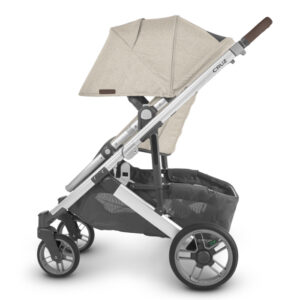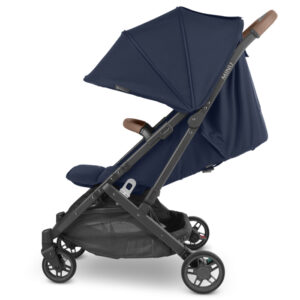
April 26, 2024
UPPAbaby® Stroller Unboxing and Setup: Your Step-by-Step Guide
by UPPAbaby
Welcoming a new addition to the family is a journey filled with excitement and wonder. We know it also brings a need for baby products that are reliable, practical, and adaptable. With an UPPAbaby stroller, you’re not just choosing a mode of transportation; you’re embracing a lifestyle, making memories, and joining our family. When it comes to guaranteeing the safety and comfort of your infant or toddler, we recognize that unboxing and assembling a new stroller can be an important (yet daunting) step in the process. Take a look at how our stroller line-up is assembled and used!
UPPAbaby Vista V2®: Adaptability and Longevity

The UPPAbaby Vista V2 is your reliable companion for effortless navigation. Its ability to accommodate up to three children serves the dynamics of a growing family. The fabrics are durable and provide your children with comfort. The full-size forward and parent-facing toddler seat ensures your child is safe while still offering a full view of the world. Experience the perfect blend of function and fashion with the Vista V2 as part of your family’s journey.
Set Up & Go With Vista V2


Watch our step-by-step video tutorial here!
For those who have a bassinet configuration, check out this step-by-step video tutorial here!
UPPAbaby Cruz® V2: A Sleek Companion for Modern Adventures

Embark on the adventures of everyday life with the UPPAbaby Cruz V2, a chic design that ensures effortless twists and turns. Its sleek silhouette offers full functionality without adding extra bulk. As your little one grows, the Cruz V2 evolves with an enhanced toddler seat that embraces them in the perfect blend of comfort, style, and all-wheel suspension.
Set Up & Go With Cruz V2


Watch our step-by-step video tutorial here!
UPPAbaby Ridge®: For Bold Trailblazers and Pioneers

With the all-terrain UPPAbaby Ridge Jogger, you’re able to embrace an active and exploratory lifestyle from birth onward! This stroller is designed for those who want to explore uncharted territory and experience the thrill of discovery. The robust, never-flat tires, designed for diverse terrains, reflect a commitment to endless exploration. The Ridge’s responsive suspension and hand brake system ensure that your child has a smooth ride no matter where the trail takes you.
Set Up & Go With Ridge


Watch our step-by-step video tutorial here!
UPPAbaby Minu® V2: The Quintessential Travel Buddy

Navigating the vast world with your little one is a breeze with the UPPAbaby Minu V2. Its lightweight design ensures that you and your child are always travel-ready: the Minu V2 is a perfect option for trains, buses, and even planes! While the overhead-friendly folding feature showcases its adaptability, the large storage basket, perfect for souvenirs or daily essentials, is a nod to its practicality. Every trip, no matter your destination, is made memorable with the Minu V2 by your side.
Set Up & Go With Minu V2


Watch our step-by-step video tutorial here!
Journey Onward: Your UPPAbaby Stroller is Set to Go

You’re now ready to welcome and integrate your new stroller into your own family! Embrace each outing with the assurance that UPPAbaby is here to enhance those experiences, making every adventure with your little one seamless and memorable. Still have questions on assembly, set-up, or usage? Connect with our Customer Experience team! From gear setup to car seat fittings, UPPAbaby’s Customer Experience Team provides personalized support, ensuring a supportive and empowering service every time. With a suite of digital resources, including online tutorials, product demonstrations, and virtual appointments, we offer convenient multi-channel support via phone, email, and video chat to ensure you have a real person addressing your needs wherever you are.
Welcome to the UPPAbaby family, where every stroll is a part of your story.










